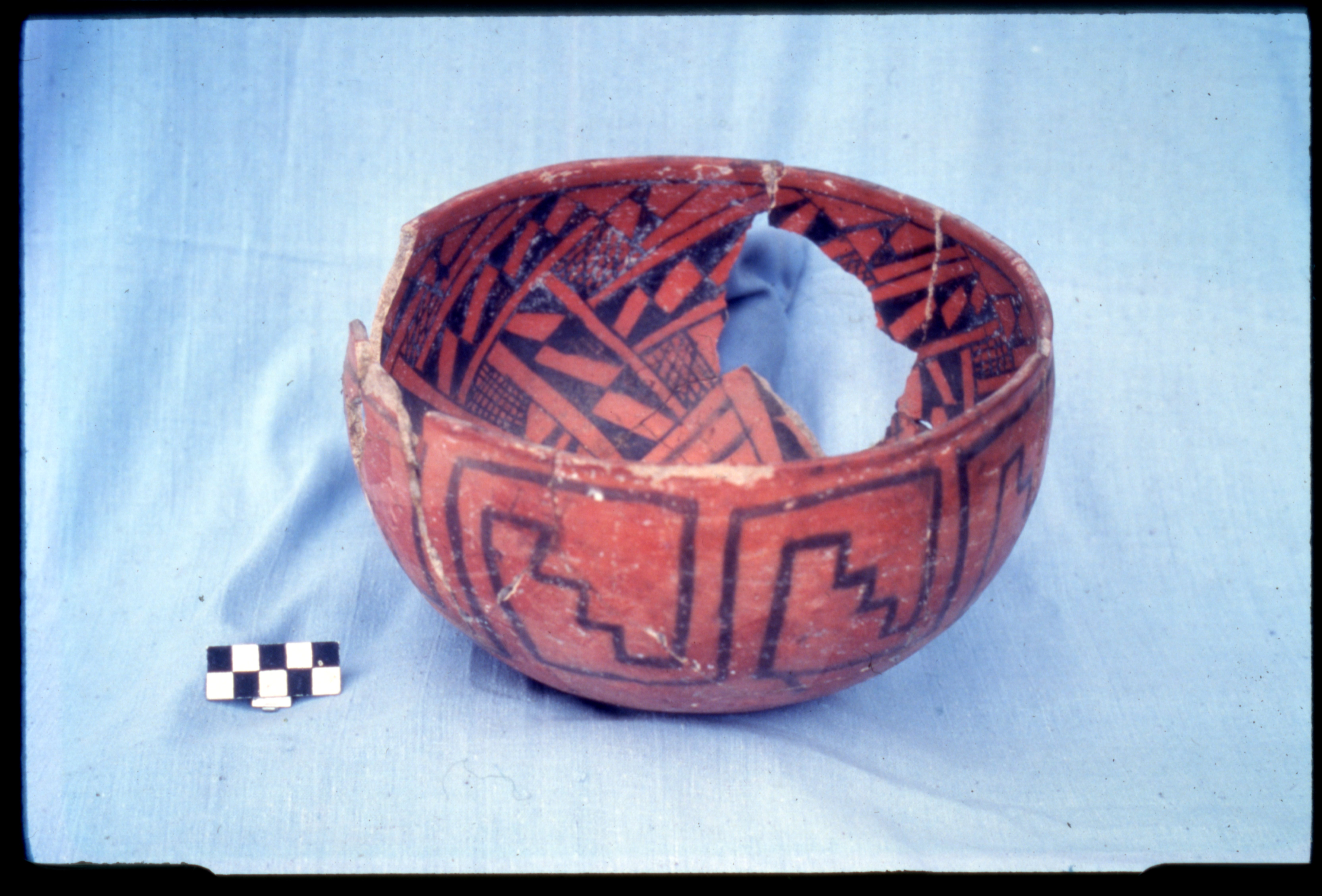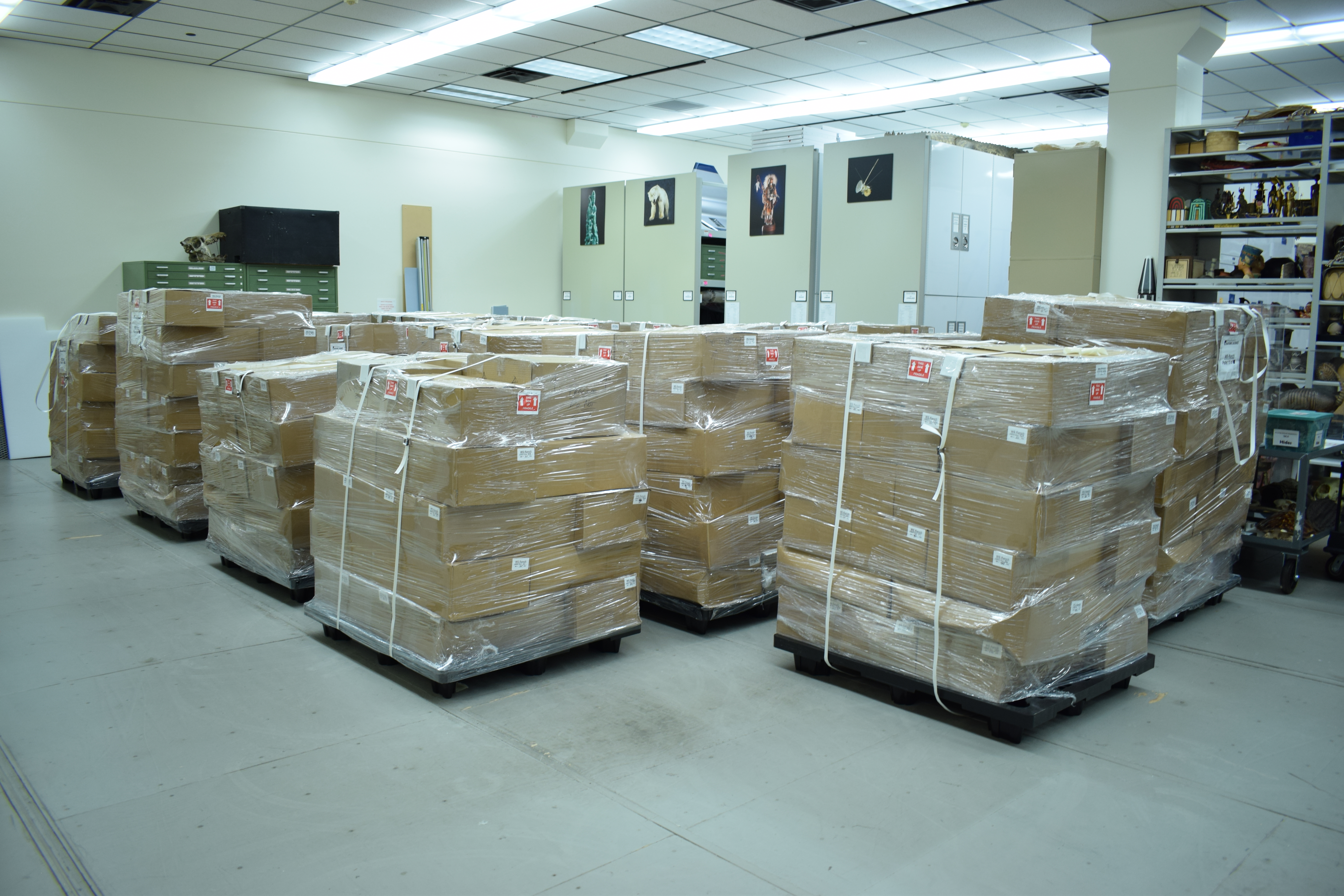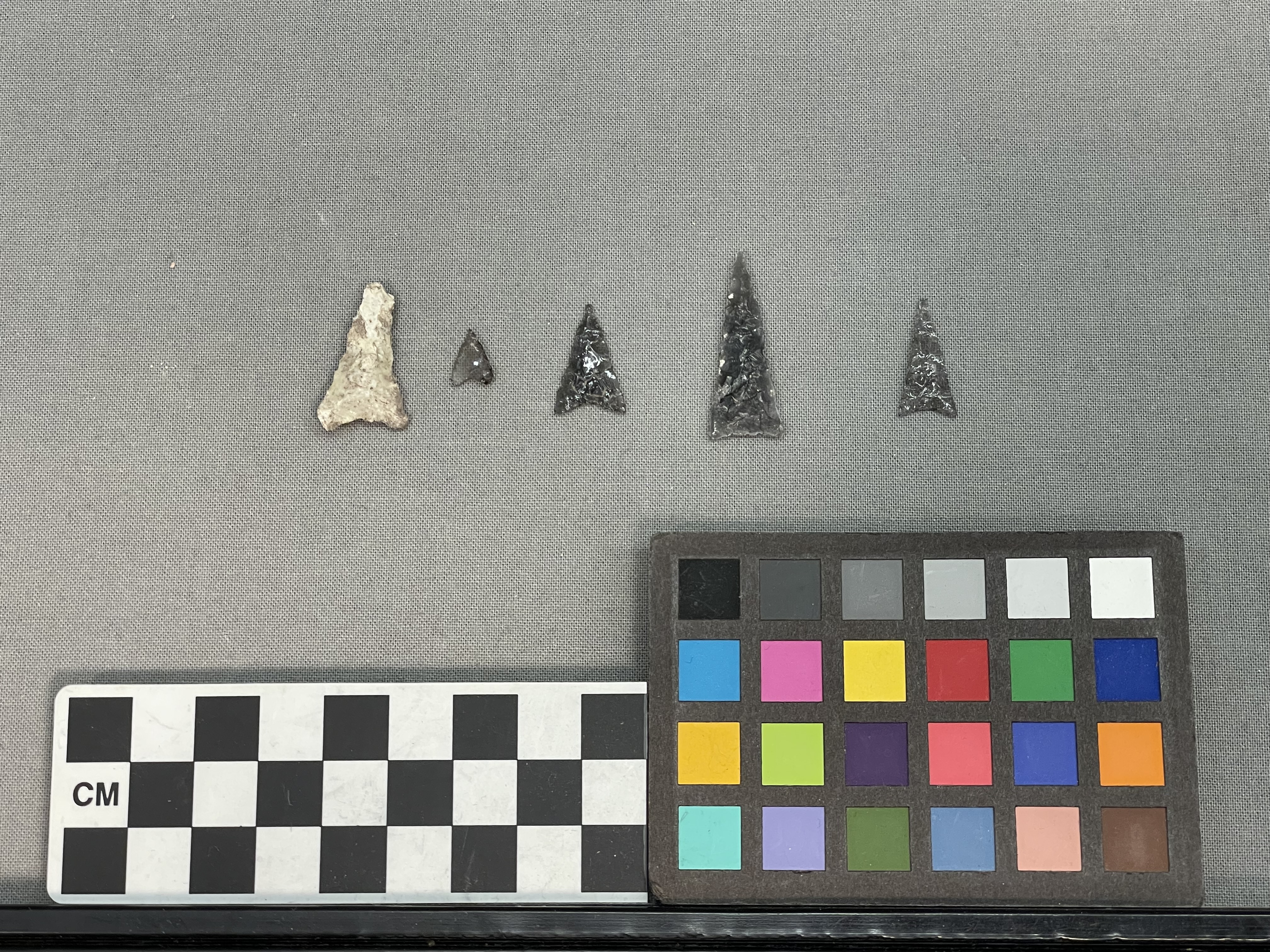
Anthropology collections staff members Elizabeth Kriebel and Erika Heacock will be presenting on an ongoing project in the anthropology collections, the WS Ranch Archaeological Project Collection.
Where did the WS Ranch Archaeological Collections come from?
Under the direction of Dr. James Neely, a team from the University of Texas, Austin excavated the site between 1977 and 1994. The objects remained at the university until 2021, when the Anthropology team from the Denver Museum of Nature & Science traveled to Austin to sort, pack and freeze 500 boxes to ship to Denver. Collections staff are now in the process of unpacking those boxes and integrating the objects into the anthropology collections.
What is in the WS Ranch Archaeological Collections?
Take a moment to think about what an archaeologist might find in your home if it were preserved as it exists right now: the plates and cups in your cupboard, the chicken bones in your garbage can and the tools in your garage, to name a few. Much like your home if it were preserved, the WS Ranch collection has everything one would expect to find in a village that was occupied for about 500 years. While going through the collections, staff and volunteers have seen pieces of pottery, stone tools of many kinds, animal bones, bone tools, plant remains, jewelry – like pendants and beads – and raw materials like pigments and minerals used for dyeing.

Reconstructed pot from the WS Ranch Site. IV.WS2017-091 (Credit/Denver Museum of Nature & Science)
How does the Museum care for this collection?
The main goal of the project is to put the objects into special packaging (called “housing” in museum collections) to archive quality materials better suited for long term preservation into the future.
As mentioned, this collection contains a wide variety of material, so staff must take that into consideration when deciding how to house the collection. The kind of housing that is best for one type of object may not be appropriate for another. For example, a piece of pottery the size of a quarter can be put into a small plastic bag and stored in a box with objects of a similar size from the same area of the site. Whereas a piece of ground stone used for grinding plant material would be too large and heavy for a plastic bag. In cases like these, collections staff make custom boxes called “mounts” that fit the object’s dimensions exactly and encase it safely in archive-quality foam. Once they are properly housed, the objects in their boxes and mounts are stored in the Avenir Collections Center.

The packaged WS Ranch Archaeological Collection immediately after it arrived at the Denver Museum of Nature & Science. (Credit/Dominique Alhambra)
Preserving physical objects is only half of the process. During archaeological excavations, participants record data about the objects when they come out of the ground. This data can include GPS coordinates, how deep in the ground the object was buried, what kind of soil the object was found in and other important details. If this data is not preserved along with the object, it becomes difficult or even impossible for researchers to learn more about life at WS Ranch. To avoid potential errors, we record all of the information associated with the individual objects in our collections database. Once this information is stored, it becomes far more accessible to researchers and collections staff at the Museum and worldwide who will use it in the future to ask and answer new questions.
What are we learning from the WS Ranch Archaeological Collections?
Some exciting data has come to light over the course of the project so far. An assortment of the ethnobotanical samples have been analyzed to determine which species are represented in the collection. The results show evidence of plants that might be familiar to those of us living in the Southwest, such as yucca, juniper and pinyon pine. Maize appeared as cobs and seeds, indicative of intensive corn production.
Obsidian was a popular and useful type of stone for making tools like projectile points, and the WS Ranch collection contains significant amounts. An additional benefit of obsidian is that because it forms inside volcanoes and has a unique chemical signature, it can tell us exactly where it originated (it’s “source”). By using X-ray fluorescence, we can match an artifact found at WS Ranch to a known obsidian source. This can tell us how far people traveled to gather and trade obsidian.

Projectile points from the WS Ranch Site. (Credit/Elizabeth Kriebel)
Why does maintaining and analyzing this collection matter?
The WS Ranch site was occupied during an exciting period in the history of the Southwest. Learning about how people lived at WS Ranch can tell archaeologists how small villages responded to cultural and technological changes happening during this time. Additionally, the diversity of objects can provide a very clear picture of how people were living and working at WS Ranch in relation to similar sites in the Southwest.
In a broader sense, museums have a responsibility to care for archaeological collections that were excavated decades ago. By processing the WS Ranch archaeological collection, not only are we learning more about the people who lived at the WS Ranch site, but we are making archaeological data accessible to descendant communities, researchers, the scientific community and the public. Access to archaeological collections like this leads to stronger connections with descendant communities, more contributions to the field of archaeology and better understanding of life in the Southwest, both in the past and in the future.
We invite you to continue following along with updates about the WS Ranch project through the Museum website and social media platforms as the project continues!

Students excavating at the WS Ranch Site in the 1980s. WSR217 (Credit/Denver Museum of Nature & Science)
